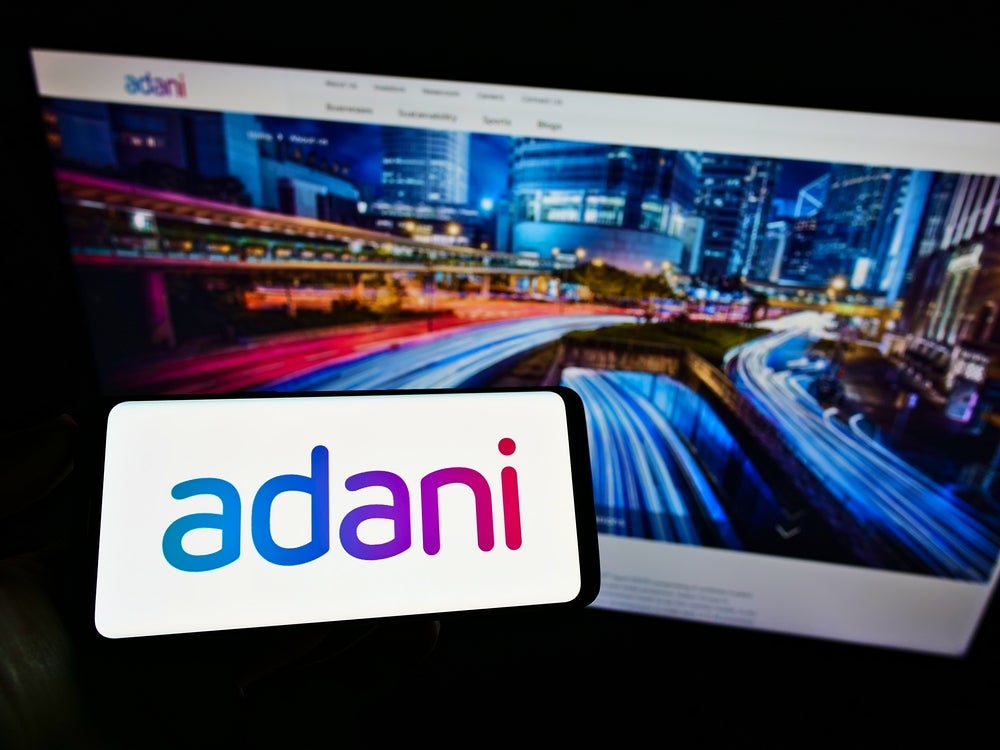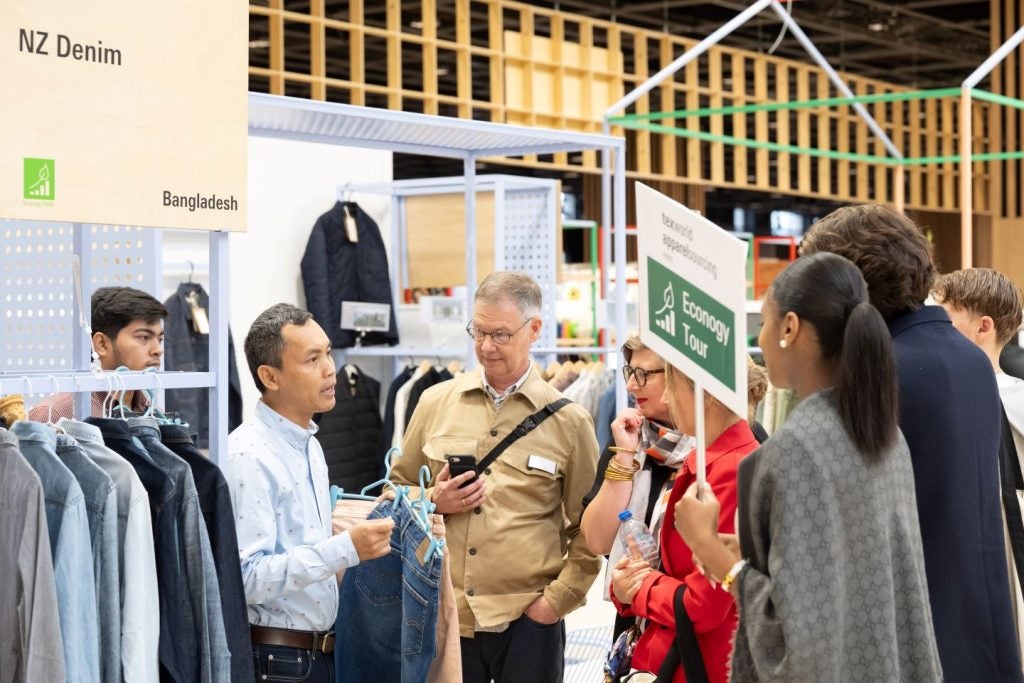During a live webinar titled 'Under the Banyan Tree: Buyers and Suppliers in Fashion,' the International Apparel Federation's secretary general Matthijs Crietee explains a new report is offering a fresh angle on the fashion industry's transition towards sustainability.
He shares: "Business innovation, sustainability and final performance are too often seen in conflict with each other, when the reality is they are interdependent."
Under The Banyan Tree, which was produced in partnership with the International Trade Center (ITC), explains how manufacturers hold the levers to create more profitable supply chains for themselves, their suppliers, and, of course, their clients.
The report's author John Thorbeck highlights the report is an "alternative approach to creating value. It is something other than a unit cost that is seasonal or transactional."
He describes the apparel industry as in "in transition" and 2024 as a very difficult year, however he believes we can pivot and have a new outlook for 2025, 2030 and beyond.
Can the apparel supply chain be sustainable and profitable?
Thorbeck outlines three key findings from the report:
- It's a shared risk business model, and creates not just buyer, but also supplier value in all tiers of the supply chain
- It focuses on process and data innovation that supersedes manufacturing geography or location and cost negotiation
- Finally, it is a roadmap for data science, access and applications that can accelerate productivity and profitability.
He describes fashion as an industry that makes 10 items to sell three, which equates to excess inventory and lost capital. This puts tremendous pressure on the items that sell to pay for those that don't.
"There's something wrong with an industry that makes 10 to sell three. The result we seek is operating with less inventory yet higher profit performance," he shares.
Thorbeck explains the primary metric in the report is capital across the entire supply chain. For this reason shared risk isn't a buzzword - it's equivalent to shared value and shared purpose.
He adds the report offers a way to recruit companies and individuals who can deliver the applications and tools needed to make shared risk a reality.
Thorbeck continues: "It's been a journey with individuals who want to make a difference."
Does price still matter most to fashion brands?
The US CEO of apparel manufacturer MAS Holdings, Brad Ballentine, admits price alone hasn't got the apparel supply chain to where it needs to be.
"It's difficult to sit down with a customer, or factory partner and say we're going to do this differently. But, we can boost sustainability and social impact by freeing up working capital," he says.
MAS is not afraid to tell fashion brands that it can make them more profitable by pulling levers upstream.
The challenge is telling customers the input costs will go up.
"But, we're not competing on first costs here - we're competing on what it costs to do business," he clarifies.
Producing in smaller batches could mean less production, but the manufacturer can charge more.
MAS defines strategic intent by fully diagnosing raw materials to customer sentiment.
He points out this reduces financial impact and overproduction, which can then be aligned with operational capabilities.
"Some of these are technology enablers and it can unearth some things that are uncomfortable on both sides, but if we don't take this step we're not going to hit our Sustainable Development Goals (SDGs).",
Using AI to improve apparel's sustainable and financial success
MAS works with technology company Syrup Tech to improve results throughout the supply chain.
Its co-founder and CEO James Theuerkauf says AI has "real strategic applications" because of the sheer volume of data it can process and it has the cognitive capabilities to make sense of that data.
He notes forecast models used to take past trends and extrapolate them for the future. AI means neural networks can become billion parameter models that can identify hyper localised trends and see how those link with social media trends and ecommerce behaviours like click through rates. And, this can all be linked to ecommerce sales.
"These forecasting capabilities can then power applications like making sure you're buying enough, or allocating the right amount to the right location by sensing that demand and responding to it."
However, he cautions "using an old transactional system that just slaps AI onto it with a little bit of machine learning won't make a difference".
Theuerkauf uses the Barbie pink trend as an example to explain there was no way even the world's best cognitive model could have predicted its popularity.
In a world of supply chain flexibility where raw materials can be pre-positioned it's a whole different game.
He continues: "Cognitive capabilities can pick up a trend and influence supply chain actions. This is becoming the new supply chain paradigm, or supply chain operating system, which is powered by AI."
He's quick to add that all of this might sound futuristic, but "we're working on this today with MAS, its retailers and brand partners".
Transforming the supply chain with on-demand
Thorbeck describes Theuerkauf's solution as a bridge between forecasting and supply chain flexibility.
Platform E is at the other end of that bridge as its goal is to use on-demand to revolutionise the way fashion is produced with minimal environmental impact.
Platform E's co-founder and CEO Gonçalo Cruz tells attendees he started with luxury fashion customisation because luxury brands already have personalisation and made-to-order in their DNA. Plus, they have the advantage of verticality and owning small factories so they can capture 100% of their own data points.
In other words, it is easier for them to connect what's happening in store to their supply chain.
But, he still saw data silos so it was important to connect real time visibility from the front end to the back end and vice versa to prevent lost sales and maximise margins.
He regards this as the most crucial element for the mass fashion supply chain.
Obviously, he says: "We know that we will have to connect those dots as fashion brands don't always sell exclusively in their own stores... That's the reason why it is so important to connect all of those data points".
He believes a bigger impact across the wider fashion supply chain operating system is "absolutely viable, scalable and possible" as he's done it already.
Thorbeck sees Platform E as a shining beacon because it's enabling companies to operate without inventory which eliminates excess production. Plus, as the items are made on-demand they are pre-paid which creates a brand premium.
But, he quizzes Cruz on how this on-demand offering will impact global garment manufacturers.
Cruz says factories must have an entirely digitised catalogue with digital twins and digital data points and this can be in 2D, 3D or using generative AI.
Once it has this it can understand in real time the engagement and conversion of sales with clients.
He goes back to the previous example of Barbie pink and explains that if in real time a supplier knows to start cutting pink rolls and purchasing pink dye in a few days those two digital points are activated and you can show a photo or generative AI image of a Barbie pink dress without needing the physical sample photographed. It can then be produced and delivered to the right location that has the demand.
Can suppliers lead the step change for brands?
MAS is working closely with Syrup Tech and Platform E to help answer the missing parts of the puzzle for fashion brands and retailers.
He says there are key questions to consider, including:
- What are the parameters?
- What are the staging protocols along the supply chain?
- How do we apply the data?
- When do we pull the triggers?
He admits there is a risk with all of this as after the data is shared a potential customer might decide not to produce a particular item, but he maintains there is a light at the end of that tunnel, so his company is taking the risk: "We have to take a tool set, and we have to figure out how to get it done," he states.
Thorbeck agrees, adding MAS' work with Syrup Tech and Platform E is giving apparel a financial and sustainable solution to overproduction.
Creating shared risk in practice
Ballentine adds that establishing a shared risk approach between suppliers and brands is key to all of this and it highlights it is discussed at length in the report.
"It's a way for us to get together and hold hands knowing that something could go wrong."
He points out if brands have unlimited choices for manufacturing garments it can lead to a long, rigid and risky supply chain.
Having business rules or agreed parameters on the type of garment a factory will produce, the choice of materials and colours, it means the factory will only hold what is agreed and it can measure itself against the shared metrics.
Plus, if the shared business rules are followed, a MAS factory can get items ready in 12 weeks as opposed to 12 months, but it makes it clear that if a brand decides to step outside of the rules the timeframe will be much longer. Ballentine calls this the "trade-off" for having a shorter and lower risk supply chain.
What's next following the report?
International Trade Center (ITC)'s head of fibres, textiles and clothing unit Matthias Knappe reveals the report and the discussions around it are just the "first steps towards empowering manufacturers" of all sizes to tackle overproduction.
The ITC plans to implement pilots with MAS to prove the concepts discussed.
"ITC is a UN agency so we would like this to be used and replicated worldwide. These are exciting times, so stay tuned for the results of these pilots," he says.
The IAF's Crietee reveals his members are setting up a new Business Innovation Committee to address the 5C framework outlined in the report:
- Contracts with Shared Risk metrics are the essence of mutuality between buyers and suppliers
- Capital incentives for joint investment in supply chain productivity
- Capacity building for manufacturers via training and pilots
- Commons for open-source software (OSS) to accelerate access to digital skills and tools
- Embrace Creators who lead market adoption for user-generated content.
He concludes: "We can't do everything at once, but capacity building seems to be a good place to start and we'll work with the ITC on really helping industry associations and their members to take up these learnings and initiatives to do flexibility in a smart way."
Click here to read the Under the Banyan Tree Buyers and Suppliers in Fashion report in full.
















